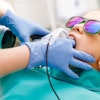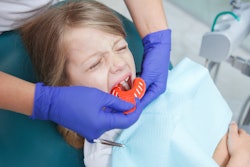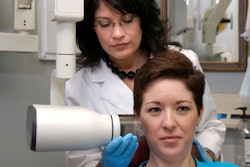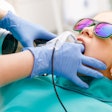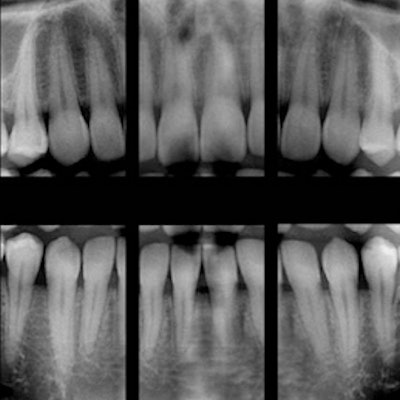
The recommendation to avoid intraoral x-rays during the COVID-19 pandemic due to potential aerosolization had an unexpected upside -- it showcased the usefulness of extraoral bitewings, according to a recent clinical article published in the British Dental Journal.
Clinicians found that extraoral bitewings produced excellent-quality images that were comparable to intraoral x-rays, improved diagnostic accuracy, required a substantially lower radiation dose, and offered a greater field-of-view.
"Extraoral bitewings were found to be a suitable alternative to sectional panoramic radiographs as they provided high-quality images with a lower radiation dose," wrote the authors, led by Rachel Little from the orthodontic department at the Royal Liverpool University Dental Hospital in the U.K. (Br Dent J, July 24, 2020, Vol. 229:2, pp. 105-109).
A quick shift
All routine dental care was brought to a halt in the U.K. on March 25 due to the novel coronavirus, and Liverpool University Dental Hospital shifted to providing only emergency dentistry. Dentists adhered to recommendations to take extraoral x-rays instead of intraoral x-rays to reduce the risk of disease-carrying droplets. Clinical diagnostic issues, such as the images not being clear enough to see a tooth that was causing pain, arose from sectional panoramic radiographs. Also, these images were especially problematic in patients with heavily restored teeth and those with crowding in the buccal segments. Therefore, dentists turned to extraoral bitewings as an alternative.
The hospital's dental panoramic machines had a bitewing function that made the apices of teeth visible. This setting provides an orthogonal view that opens the contact points better than a traditional panoramic x-ray by using improved interproximal angulation projection geometry.
During one week of COVID-19 dental service at the hospital in April, 108 sectional extraoral radiographs, 58 extraoral bitewings, and 50 sectional panoramic radiographs were taken and analyzed for quality and radiation dose.
High-quality images, lower radiation dose
Of the extraoral bitewings, 92% scored grade 1, which is considered excellent quality, according to the authors.
Additionally, the radiation dose was lower than with sectional panoramic radiographs and was comparable to that of intraoral bitewings, while providing a greater field-of-view. Using the extraoral bitewing setting reduced the radiation dose by more than 50%, compared with the sectional panoramic x-ray, Little and colleagues found.
Some of the images scored as grade 2, which meant x-rays appear grainy, may have been due to emergency dental staff not being trained to make finer adjustments. Staff members were trained to use the machines safely with standard settings due to the short notice and unprecedented situation, the authors noted.
A chance to modify and improve
The use of extraoral bitewings could provide a better option for those with sensitive gag reflexes, among others, in addition to providing good-quality images and lower radiation dose, the authors wrote.
"Post-COVID-19, consider extraoral bitewings as an alternative to vertical bitewings for children and adults who struggle to tolerate intraoral radiographs, in order to enhance diagnostic information and patient experience," they wrote.

